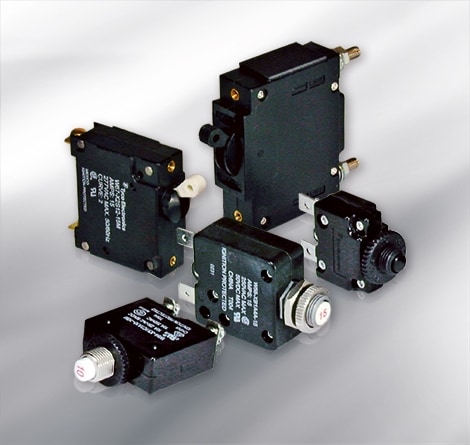
Potter & Brumfield Relays for appliances, HVAC, and industrial controls
Our Potter & Brumfield portfolio includes different types of relays and contactors as well as circuit breakers. Our components consist of thermal and magnetic types, protecting equipment across multiple application settings. Our Potter & Brumfield general purpose relays are used in appliances, HVAC, and industrial control systems.
Our Potter & Brumfield solid state relays (SSRs) are designed for industrial applications, where silent, fast and long electrical life in switching is required. These are used in heating, power, lighting and motion applications. Our SSRs can operate with very low operating times (make/bounce) with practically no limit on number of switching cycles. These are best suited for fast and high switching cycle requirements. Our solid state relays offer a longer electrical life since they do not contain any moving parts. Our SSRMP mini-puck series will add a panel mount option to the SSR range of products. With load ratings ranging from 10/16/25 AMP @ 240/480VAC, unlimited number of switching operations, added along with the ability of high speed switching prevents interference of external signals. The compact size provides customers space saving options and quick connect terminals offer easy installation. To limit the part numbers based on input voltage conditions, SSRMP input side is standard (4-32VDC) across all output ranges.
What precisely is an electric arc? How does it ignite and what causes it to extinguish? How does an arc affect the life of relay contacts? These are some of the questions that we will discuss here. We hope to help you better understand how to obtain the longest life possible from relay contacts such as these. But first, let’s take a minute to define a few of the terms we’ll be using. First of all, “constriction” refers to the very first, tiny area of contact surface to make, and the very last point to break. Melt Voltage is that amount of voltage that exists across the constriction which will cause a current sufficient to liquify the contact material at the constriction. Arc Voltage is that amount of voltage that exists on contacts separated by a small gap that will cause an electric discharge cross the gap. And, lastly, Arc Current is that amount of current necessary to just sustain an arc caused by the arc-voltage electric discharge. Now, keep these terms in mind as we take you into the world of relay contacts—a fairly harsh environment. Let’s take a microscopic look at the effects of contact arcing.



